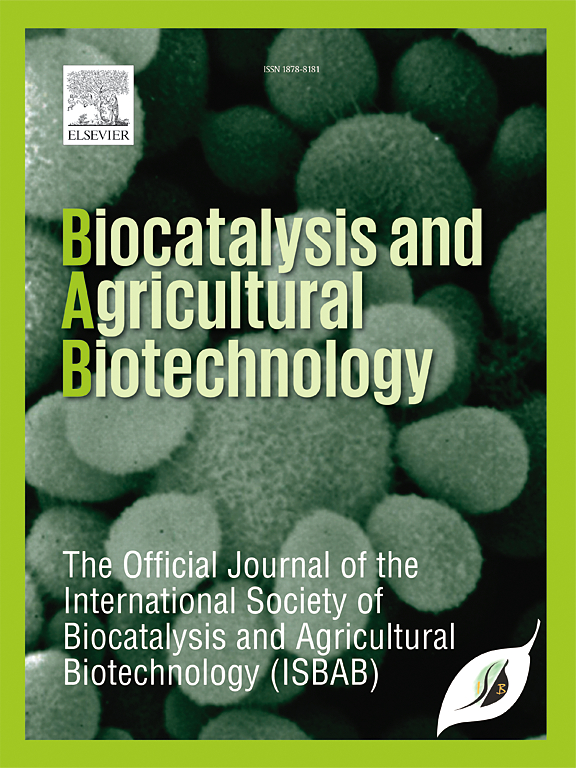Exploring Aschersonia placenta: Characterization and submerged cultivation in an air-lift bioreactor
IF 3.4
Q2 BIOTECHNOLOGY & APPLIED MICROBIOLOGY
引用次数: 0
Abstract
The genus Aschersonia is readily found in natural epizootics against Aleurocanthus woglumi, an important pest in citrus crops commonly known as the citrus blackfly. It was one of the first microbiological pathogens studied in agricultural pest control. Host invasion begins with the attachment of fungal spores to the insect's cuticle, which is composed mainly of proteins and the polysaccharide chitin. However, Aschersonia is a fungus that is difficult to cultivate on a large scale, limiting its use in biological pest control programs. Therefore, this study aims to evaluate the production of Aschersonia in different solid and liquid culture media, investigate its potential for chitinase production, and finally evaluate the use of an air-lift bioreactor for the development of this fungus. We identified a fungus collected from a natural epizootic of A. woglumi and conducted a biochemical and molecular study focusing on the microbiological potential to produce chitinases. In addition, we investigated seven different additives (casein, yeast extract, pasteurized milk, chitin, Manihot esculenta starch and insect tegument) to accelerate and increase the growth of the isolated strain in synthetic culture media. We also investigated alternative production techniques, such as submerged cultivation in an orbital shaker and the air-lift bioreactor. Based on DNA sequencing and morphological analysis, the isolated fungus was identified as Aschersonia placenta. The solid culture with bromocresol purple dye showed higher enzymatic activity when cultured in media supplemented with chitin. Analysis of enzymatic activity in submerged cultivation confirmed that the addition of chitin increased chitinase production by more than fivefold compared to chitin-free broth cultivation. SDS-PAGE analysis allowed the identification of two regions at 37 and 115 kDa as possible chitinases. Submerged cultivation of A. placenta in an air-lift bioreactor resulted in production of 501.67 g L−1 of wet biomass at 5 days (25 °C, 1.5 vvm aeration rate) using 20 g L−1 dextrose, 4 g L−1 potato broth, and 10 g L−1 Manihot esculenta starch. These results support the suitability of submerged cultivation, especially in air-lift bioreactors, with the addition of Manihot esculenta starch in Potato Dextrose medium for the alternative production of A. placenta.
求助全文
约1分钟内获得全文
求助全文
来源期刊

Biocatalysis and agricultural biotechnology
Agricultural and Biological Sciences-Agronomy and Crop Science
CiteScore
7.70
自引率
2.50%
发文量
308
审稿时长
48 days
期刊介绍:
Biocatalysis and Agricultural Biotechnology is the official journal of the International Society of Biocatalysis and Agricultural Biotechnology (ISBAB). The journal publishes high quality articles especially in the science and technology of biocatalysis, bioprocesses, agricultural biotechnology, biomedical biotechnology, and, if appropriate, from other related areas of biotechnology. The journal will publish peer-reviewed basic and applied research papers, authoritative reviews, and feature articles. The scope of the journal encompasses the research, industrial, and commercial aspects of biotechnology, including the areas of: biocatalysis; bioprocesses; food and agriculture; genetic engineering; molecular biology; healthcare and pharmaceuticals; biofuels; genomics; nanotechnology; environment and biodiversity; and bioremediation.
 求助内容:
求助内容: 应助结果提醒方式:
应助结果提醒方式:


